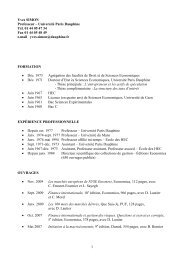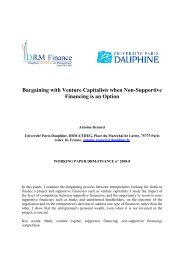Corporate governance and earnings management ... - CEREG
Corporate governance and earnings management ... - CEREG
Corporate governance and earnings management ... - CEREG
You also want an ePaper? Increase the reach of your titles
YUMPU automatically turns print PDFs into web optimized ePapers that Google loves.
(Hirschfeld, 1959). Goodwill was a “unique organic item” (ruling of September 30, 1931)<br />
(quoted in Greve, 1933, p. 80). Mörschel (1933, p. 48) believed that this theory was a screen<br />
to hide more prosaic arguments: the tax administration already allowed secret reserves in the<br />
form of rapid depreciation of machines, <strong>and</strong> wanted to protect its fiscal revenues by<br />
preventing amortization of goodwill. Whether theoretical or pragmatic, this argument failed to<br />
convince the commercial world who generally does not considered goodwill, when it was<br />
capitalized, as a true asset but only as a means to reduce the indebtedness (Dziadkowski,<br />
1980, p. 1515, quoted by Söffing, 1988, p. 597-599).<br />
3.1.4. France: the static phase (1880 - 1917)<br />
In terms of both doctrine <strong>and</strong> case law, the static phase in France was dominated by the<br />
purely static approach: goodwill was not considered a true asset <strong>and</strong> was to be expensed<br />
immediately, or at the very least rapidly.<br />
a) Doctrine<br />
In the 1880s, the authors of the first chart of accounts such as Didier (1885) with his “strict”<br />
balance sheet, Courcelle-Seneueil (1872) <strong>and</strong> Vavasseur (1868), who stressed the difficulty of<br />
realizing fixed assets (in Verley, 1906, p. 121), recommended that assets, including goodwill,<br />
should be carried at liquidation value. To this way of thinking, a “good” asset is one with<br />
totally amortized goodwill.<br />
In the 1900s, most authors also insist that acquired goodwill is not a real asset. While they<br />
accept recognition of this “fictitious” asset, rapid amortization (generally total amortization<br />
within less than five years) or a similar solution is required.<br />
Kopf (1904, p. 27) is in favor of “<strong>management</strong> based on the assumption that a company<br />
will be liquidated”, <strong>and</strong> considers that it is “prudent to amortize patents rapidly” (<strong>and</strong> by<br />
implication customer bases, which he puts on the same level).<br />
24



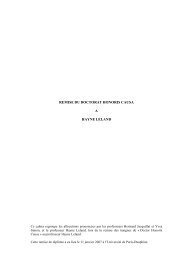

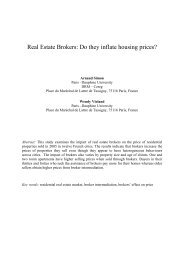
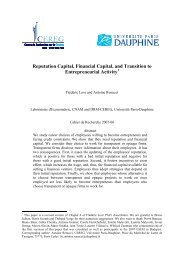

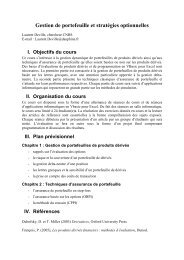


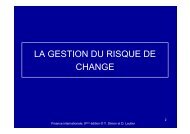
![& 6 ] ^ F ]^ - CEREG - Université Paris-Dauphine](https://img.yumpu.com/33326502/1/184x260/-6-f-cereg-universitac-paris-dauphine.jpg?quality=85)

